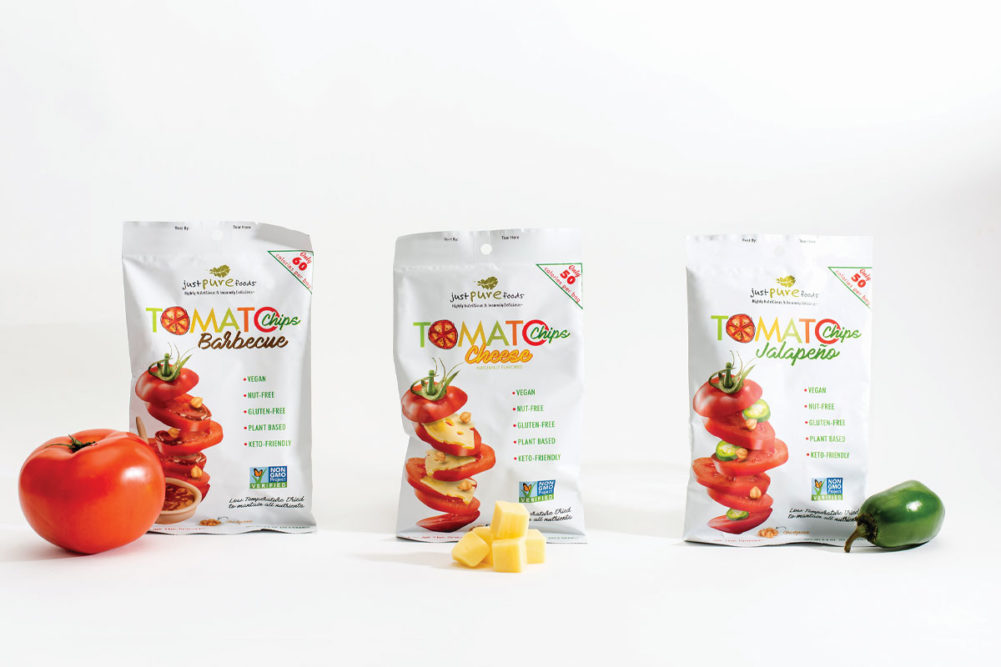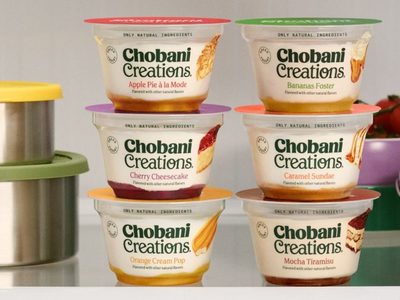CHICAGO —The line separating a snack from a mini meal has disappeared, and the line separating those two categories from a meal continues to blur. Such behavioral shifts are why it’s important for product developers to be mindful of the ingredients formulated into snacks, as a growing number of consumers rely on them for adequate nutrition.
Snacks were one of the most dynamic categories in consumer packaged goods during the pandemic. Consumer demand increased category-wide, and more people expressed interest in the nutritional value of some of their snacks, said Scott Feldman, founder of Just Pure Foods, San Diego.
“Consumers are prioritizing their health and looking for better-for-you options,” he said.
The global healthy snacks market was $85.6 billion in 2021 and is expected to grow at a rate of 6.6% annually between 2022 and 2030, according to Grand View Research, San Francisco.
This year’s “What’s Trending in Nutrition” survey from Pollock Communications, New York, and the publication Today’s Dietitian, Spring City, Pa., included responses from 757 registered dietitian nutritionists (RDNs) regarding what they believe consumers will value in 2023. They also predicted the leading ingredients that may be perceived as “superfoods” for the year, many of which have application in better-for-you snacks. The list, in alphabetical order, is ancient grains, aquatic greens (e.g., algae, seaweed, etc.), avocados, blueberries, fermented foods, green tea, leaf greens, non-dairy milks, nuts and seeds.
The RDNs predicted that, despite loosened COVID-19 restrictions, consumers will still be snacking as much as they were over the past two years. Boredom, comfort and working from home were the three leading reasons cited in the survey.
“Consumers are more aware than ever of the benefits food can provide for gut health and immune function,” said Louise Pollock, president of Pollock Communications. “As consumers face higher costs at the grocery store, they’ll be looking for affordable food and snacks that still provide valuable health benefits.”
Sally Lyons Wyatt, executive vice president and practice leader-client insights, IRI, Chicago, said, “There are pockets of growth in the better-for-you snack segment. Some of these products are inherently healthful. Think nuts. Others are made to be healthy (through the addition of ingredients, such as protein, fiber and other nutrients). Consumers opt into trying these products because they are looking for whole food ingredients, as well as snacks that comply to the eating plan or diet they are following.”
Crunchy Tomato Chips, for example, are a whole food snack from Just Pure Foods. The fruit-based dehydrated tomato chips are considered upcycled because they are made from tomatoes that have been plowed under because they are either not the right size or shape, or they ripened too early.
New York-based Popadelics offers a whole food snack based on shiitake mushrooms. The mushroom chips are a good source of protein and fiber.
Ms. Lyons Wyatt cautioned that many of the alternative health-focused snack foods are very small in dollar and unit sales, compared to traditional snacks like a bag of chips or granola bar. Protein-fortified snacks are experiencing the most activity.
“When protein is mentioned on the front of package, these snacks are winning with consumers,” Ms. Lyons Wyatt said. “Consumers associate protein with energy, and everyone seems to be looking for energy these days.”
Many types of plant proteins may be found in snack foods, and mycelium proteins are expected to be the next big vegan protein. In nature, mycelium spreads quickly and resiliently underground, assembling a network of branching thread-like fibers that provide the stability needed for mushrooms to sprout and stem. The root structure of fungi may be used to convert side streams of carbohydrates, such as corn, via fermentation into a high-protein ingredient that may be used to manufacture all types of foods, including grain-based snack foods.
Chicago-based startup Nature’s Fynd, for example, uses a mycelium-based protein ingredient to create dairy-free cream cheese alternatives. Hyfé Foods, another Chicago-based startup, leverages mycelial fermentation to create flour products.
Animal protein innovation
Animal protein marketers want a piece of the snacking space, too. Perdue Farms, Salisbury, Md., is introducing Perdue Chicken Plus Snackers bite-size snacks. Available in barbecue, “firecracker” and pizza varieties, one serving contains a quarter cup of vegetables and 9 grams of protein by blending chicken with vegetables.
The Quest brand from Simply Good Foods Co., Denver, is focused on dairy protein. The brand’s most recent new product is cheddar cheese crackers.
“Consumers are focusing on their nutrition and wellness goals, but still want that savory snacking experience,” said Linda Zink, chief marketing officer at Simply Good Foods. “Quest is all about supporting consumers by delivering on taste, while also offering the macros they are seeking.”
Quest promotes “10 grams of protein” on the front of packages, while In Good Hands, Visalia, Calif., a better-for-you snack company founded by California dairy farmers, specifies its protein cheese puffs contain 12 grams of milk protein per serving. The puffs also contain only 1 gram of sugar per serving.
“Like 97% of consumers, our dairy farmers are snackers and always looking for better-for-you options to power them through their busy days,” said Stacy Heaton, director of communications for California Dairies Inc., parent company of In Good Hands.
Responsible Foods is a food startup company founded in 2019 in Reykjavik, Iceland, by the food scientist husband-and-wife team of Hordur and Holly Kristinsson. The company’s first offering — Naera Icelandic Snacks — debuted in the United States nearly a year ago. The popped, shelf-stable snacks are formulated with dairy ingredients. The company now is adding Fish Jerky Crunch. The new snack includes fish in the formulation to boost protein content and make it a source of omega-3 fatty acids.
“Naera Fish Jerky Crunch is not loaded with sugar or soy sauce like many other fish jerkies,” Ms. Kristinsson said. “These are the first hybrid fish snacks, combining fish with premium cheese and butter from Iceland. Our snacks are setting the gold standard for dairy and seafood snacks by sustainably introducing Icelandic superfoods to the world in an indulgent, better-for-you, fun form with innovative textures and flavors.”
Snacking on dried fish may not be common in the United States; however, it is part of Asian and Scandinavian cultures.
Tochi Snacks, New York, markets salmon chips made from sustainably sourced salmon. The company uses the skin of the salmon, which is the most nutrient-dense part of the fish, and lightly crisps it with tapioca flour. The product’s four flavors are Korean BBQ, salted egg, sriracha, and Thai lime and herb.
Salmon chips, known simply as fish skins throughout Southeast Asia, are a popular snack. With Asians now making up approximately 6% of the US population, the brand believes the time is now to bring flavors from different parts of Asia to the United States.
“We created Tochi Snacks to break out of the ethnic aisle at traditional retail grocers and normalize Asian-inspired flavors by making it accessible for the masses,” said Dina Shi, who co-founded the company with brothers Ian and Marc Seah. “Salmon skins pack in more omega-3 fatty acids than the flesh. The skins are also loaded with marine collagen, phosphorus and potassium. The chips contain 8 to 9 grams of complete protein per serving to help you feel full for longer and recover faster from your workouts.”
While protein may appear to be dominating the narrative in the snack food department, Ms. Lyons Wyatt said indulgent snacks continue to grow. Portion controlled packages invite consumers to treat themselves.
“Today’s consumers — all generations — seem to have a ‘sweet spot’ for snacks, as we are going through some tough times, and they are giving themselves permission to indulge,” Ms. Lyons Wyatt said.




